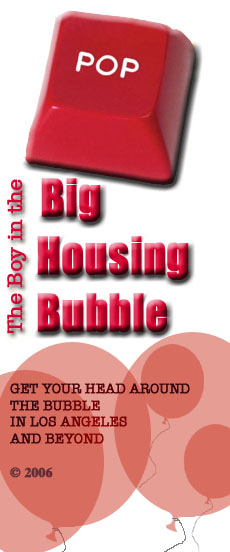The Bigger Housing Picture
A story by Alexandra Marks, a staff writer for The Christian Science Monitor, was just posted on that publication's website regarding some real developments in the construction of "affordable" housing. The term — "affordable housing" — has been thrown around a lot in the current housing market, having been applied to everyone from the poor to the middle class. If you'd have told anyone in the housing market 10 years ago that they'd be using "affordable housing" to refer to six-figure income homebuyers, they'd have laughed you out of the room. But, now it's reality, and it's going to be a major issue in the next few years regardless of whether there's a housing bubble, or not. When people in Los Angeles who earn more than $100,000 are priced out of the market, society has a major problem. Housing is a basic human need, and the fact is that the working class can no longer afford it in much of the country. Add this to rising fuel and healthcare costs, neither of which show any signs of dropping, and you've got the kind of worries that have much of Wall Street using words like "recession," even if they do whisper it the way my grandmother used to whisper the word "cancer."
The story in the Monitor gets at what some of the nation's largest cities are doing to change that through the use of "green" construction. Here's a brief excerpt:
City officials and others are recognizing that energy-efficient buildings, while they may cost a bit more to build, are far more affordable than traditional housing in the truest sense of the word. They cost less to operate and live in, and they provide tenants with a healthier atmosphere that can save on healthcare costs.Find the entire story at this link.
This fall, when reviewing certain grant proposals, New York City will start giving developers who want to build affordable housing "extra points" if builders pledge to incorporate green building principles. At the same time, Chicago is offering housing developers and apartment-building owners incentives if they build "green roofs," which are essentially roof gardens that help both insulate buildings better and improve overall air quality. And in Los Angeles, city officials have incorporated green standards into parts of the city's building code.
— The Boy in the Big Housing Bubble




<< Home